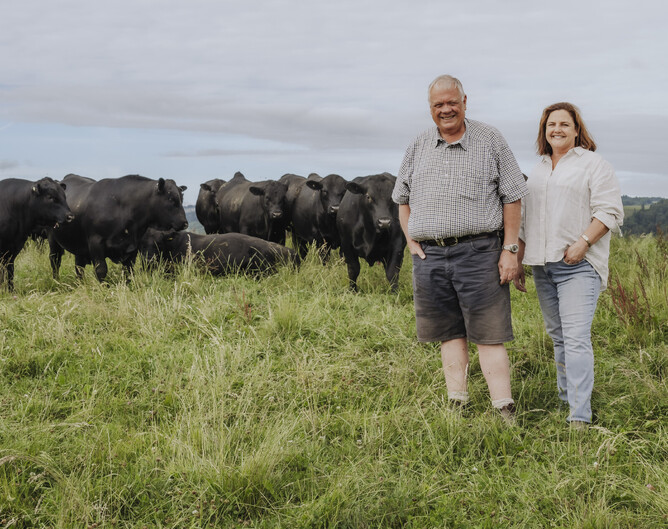Science Powering Progress at Storth Oaks
Based in heartland New Zealand, Tim and Kelly Brittain look globally as they strive to improve the productivity, profitability and eating quality of Angus beef.
In their Storth Oaks stud near Otorohanga, the couple uses every scientifically proven tool at their disposal and source genetics from USA, Australia and New Zealand to produce a genetic package that will benefit their commercial clients, the beef industry and ultimately, consumers.
While Tim’s name is synonymous with the Angus breed — past Chairman of AngusPRO and long-time chair of beef brand AngusPure NZ, as well as Secretary General of the World Angus Secretariat — it’s back home on his stud that he can apply his philosophies around profitable, top-quality beef production by driving genetic progress.
The Storth Oaks stud began in 1991 when Tim bought 37 recorded Angus cows at a stud dispersal sale near Te Kuiti.
He was immediately struck by the potential to incrementally improve the herd through genetic selection.
“I was captured by recording systems that allowed us to see progress over a number of years. That’s what’s exciting about stud breeding. It’s pretty cool,” says Tim.
While Tim admits he got off to a standing start when it came to using scientific principles and technologies, he and Kelly have embraced both as they continually progress their genetics to meet the needs of their clients and the market.
“It’s important to be moving forward and we’ve been quick to uptake any new breeding technologies and developments in animal breeding.”
Over the years this has included artificial insemination (AI), embryo transplants, genomics and DNA testing using HD50K, the technology that forms the basis of single-step BREEDPLAN analysis.
Single step evaluation uses genomic information more efficiently as it processes all genotype, pedigree, performance and progeny data simultaneously, improving the accuracy of Estimated Breeding Values (EBVs). In essence, this gives commercial breeders even greater assurance that animals will perform in line with their EBVs.
The Storth Oaks herd is made up of 300-320 cows, including first-calvers, and these are run alongside 300 commercial ewes on the Brittain’s 386 ha hill country farm. The ewes, which are all put to a terminal sire, are primarily used for weed control. While Tim and Kelly finish surplus heifers and some bulls to protect their biosecurity, the couple runs a closed herd with no commercial cattle or imported bulls on the property.
Within the stud, Tim, Kelly and the Storth Oaks team measure everything it’s possible to measure, and say they are completely transparent with their data.
“We publish everything, we are not selective at all about what we put in our catalogues, it’s all there.” This includes EBVs, indexes and structural assessments.



